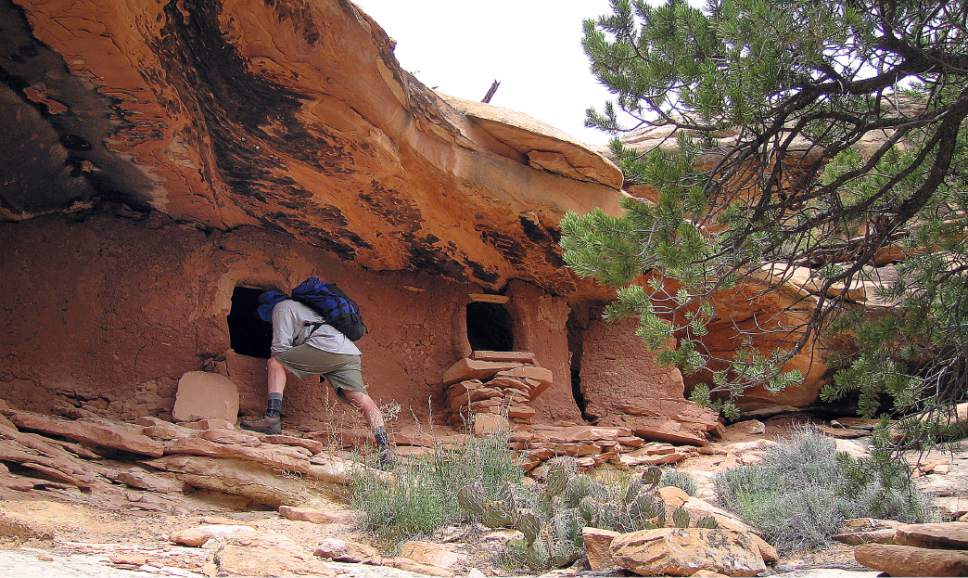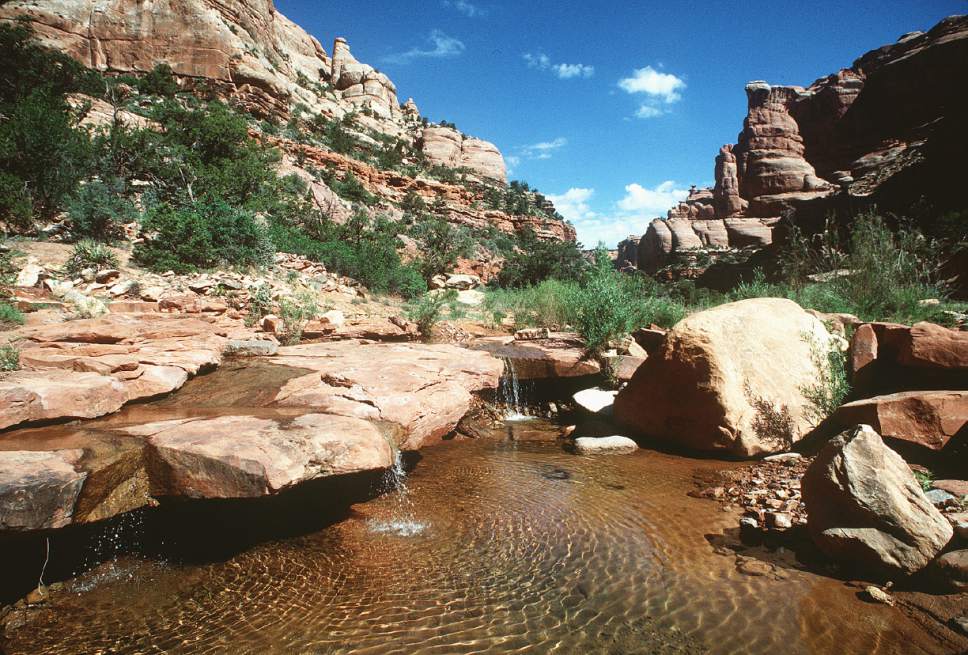This is an archived article that was published on sltrib.com in 2017, and information in the article may be outdated. It is provided only for personal research purposes and may not be reprinted.
There are lots of articles about Bears Ears National Monument but very few describe what it's actually like to be there.
I've been exploring this area for well over 20 years. This is a national issue and few people in the country have any concept of what is actually there. Here is a description of a day. (None of the archaeological sites described here appears on published maps. BLM archeologists have asked me not to mention specific locations.)
The two-track winds through the junipers and pinion pines toward the unmarked trailhead. I park the truck, throw on a pack and walk down the trail into the canyon. There's no one here.
At the bottom of the canyon I turn east, following a faint trail. There's a cave. Ancient steps carved in the sandstone lead up to the floor of a cliff dwelling. There are walls, petroglyphs and handprints.
I cross the creek and beat my way through the brush. On a cliff face there is a long petroglyph panel with many carvings; spirals, zigzags, star-shapes, human forms and goats. A line of moqui steps ascends up through the sandstone.
I follow a trail into a dark alcove. The cottonwoods are thick and the air is cool. Above is a broad overhang and a large rectangular dwelling is perfectly preserved. It is inaccessible from below, inaccessible to looters. As I approach I hear the screeches of birds. An adult great horned owl is fighting with a raven on a long bent limb of a cottonwood. The fight continues for several minutes until the raven retreats and the owl settles into a window in the cliff dwelling. This is her home. Perhaps there are fledglings inside.
I take pictures and set out my digital recorder to capture the sounds. The canyon wrens make their musical descending calls. The spotted towhees twitter in the scrub oak. I pack my gear and move up the arroyo to another alcove.
The remains of a small dwelling are perched on a ledge. A petroglyph shows a human form. Above the figure, small chips have been cut in the rock in an oval shape, like the balloon in a cartoon. The petroglyph figure is trying to tell me something. I am listening.
I rest in the deep shade of a cliff. The water from my pack is warm but refreshing. I press on up the canyon. Around every corner there is something new.
The sun sets on the canyon. I am tired and dusty. There is a creek back at camp with a swimming hole. It beckons. I have seen 20 ancestral puebloan sites in one canyon. A thousand years ago this was a paradise. I can imagine the corn growing in the arroyo, hear it blowing in the breeze and the sounds of the people working the soil. The odor of their fires still lingers in the timbers of the dwellings. The great drought began around 1300 AD. They could no longer grow enough food, so they built castles on ledges as defense from marauders. Then they were gone.
There are over 100,000 documented archaeological sites in Bears Ears National Monument. Each one tells a story. I've been exploring for over 20 years. Maybe I've seen a thousand. I'm just scratching the surface.
People will debate the designation of this place as a National Monument. I know nothing about that. I only know what it feels like to walk up these canyons and explore the world of The Ancient Ones.
Brian K. Jones, Sandy, is a field geologist, musician and ski instructor. He takes lots of pictures in southeastern Utah but never touches anything.







